Approaches to Cirque Theatre
Eve M D Gordon, director at The Dust Palace
Having worked in cirque/circus theatre for over a decade, I’ve had the immense pleasure of collaborating on the creation of 21 full-length shows with a whole range of wonderful humans. I’ve been asked to share some words on what our approaches have been. I’m a firm believer that we never stop learning and that all creative output is practice. I’m a believer that each artwork has its own time and its own way of coming into the world, and so I've always honoured that uniqueness by experimentation. And, I'm a firm believer that creativity is always a collaboration, a group effort towards telling the story of the work (“more brains are better than one”).
I came out of drama school inspired by the visceral possibilities of extended physicality and the impact that could have on an audience's experience of story/narrative. My driving thought was that if I could change someone’s perspective on something in life that is worthwhile, even if the way of doing that is simply by flipping the perspective in a purely physical space.
Working largely without precedent for what cirque theatre is or can be necessitated an investigative approach. Right from the beginning we have very consciously approached each work differently in order to learn where the edges of the art form are. Here, I will take you through several shows I have developed or had a hand in developing and the specific approaches used and histories highlighted.
1. Venus is…
Research
My first approach to creating circus theatre work was to research the sh*t out of a subject matter, gathering all the tiny tidbits that sparked my enjoyment, heartstrings and sense of the political. For Venus is… (opened Q Theatre’s Loft 2011) I was wildly interested in why people stay together once they’ve stopped feeling passionate and vital towards each other. So I delved into historic erotica and erotic art forms: Joyce, The Oyster, and Shunga to name but a few. This I balanced with holding interviews with a number of couples who had been together for over 30 years (and counting). From the interviews and the sections that sparked me, I drew together a storyline that took an older couple through their memories, feelings about aging, bravery, and re-awakenings to each other. One audience member responded to this show by saying they had given up but the show inspired them to try for another child.
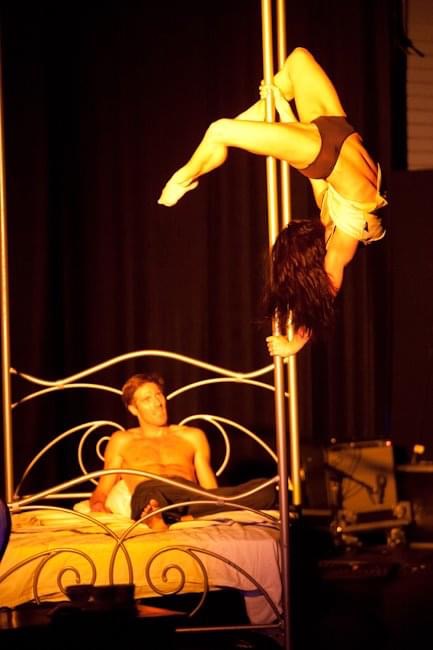
2. Love and Money
Using a real-life story and a performance environment
The main question when making circus theatre often comes down to: Where do we put the acts? What are the acts saying? What does the apparatus mean? One of the most fitting ways to do this is to make the environment somewhere that it's perfectly natural for a circus act to exist: a club, bar, venue, show.
Love and Money (2012 ish) was a work devised from Mike Edward’s career as a stripper, written from experiences by him and his ex-partner. The show follows two main characters through a series of scenes profiling their experiences both in and outside of the strip club.
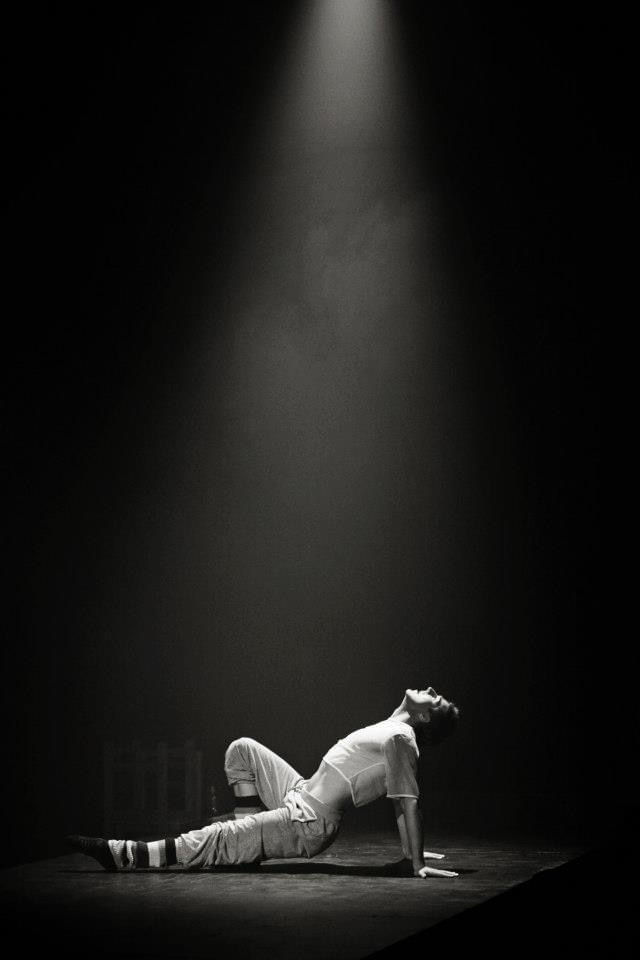
3. …with a stranger…
Commission work and devising over time
At least over half of the works we’ve made to date have been commissioned. Can you do this type of show? Do you have this kind of work? And as many artists know where possible, it's great to be able to say, “Yes, of course, we do.” First performed at the inaugural Wellington Circus Festival in 2015 …with a stranger… started as a largely disconnected mash of cool circus arts looking at how interactions with strangers can affect a person. The interesting thing about this show, and something we have used more and more over time is that it continued to shift and grow over time, with stories emerging, understandings deepening, and emotional impact growing as time went on.
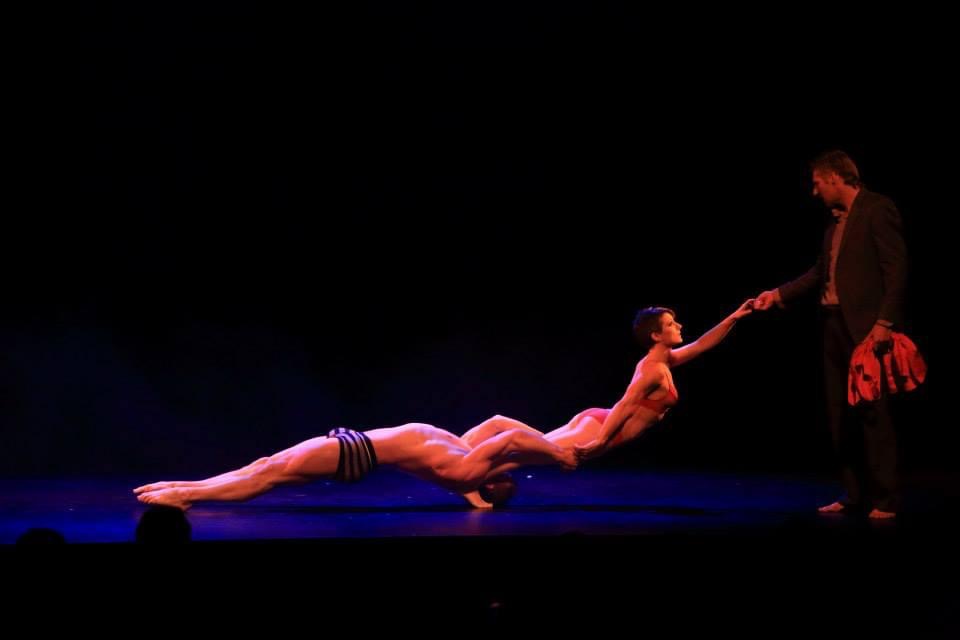
4. The Goblin Market
Using a poem as a starting point and committing to a single narrative
By this time we had a number of tools and techniques we liked to use in developing shows: physical image making, responding to various starting points, devising and improvisation techniques. The Goblin Market (2016 - 2019) was our first work using a complete narrative starting point. The poem follows the destruction and ultimate reunion of two sisters at the hands of a marketplace of goblins with nefarious intent. The set narrative gave us license to explore further and wider into the ideas, concepts, and interactions within the piece. This, alongside having to figure out the best ways to visualise each moment of the story and having to make the plot clear and relatable for a modern audience, had our work cut out for us. Devising the work with a smaller cast who all held strong connections with the subject matter meant that The Goblin Market is one of our most successful and interesting works to date.
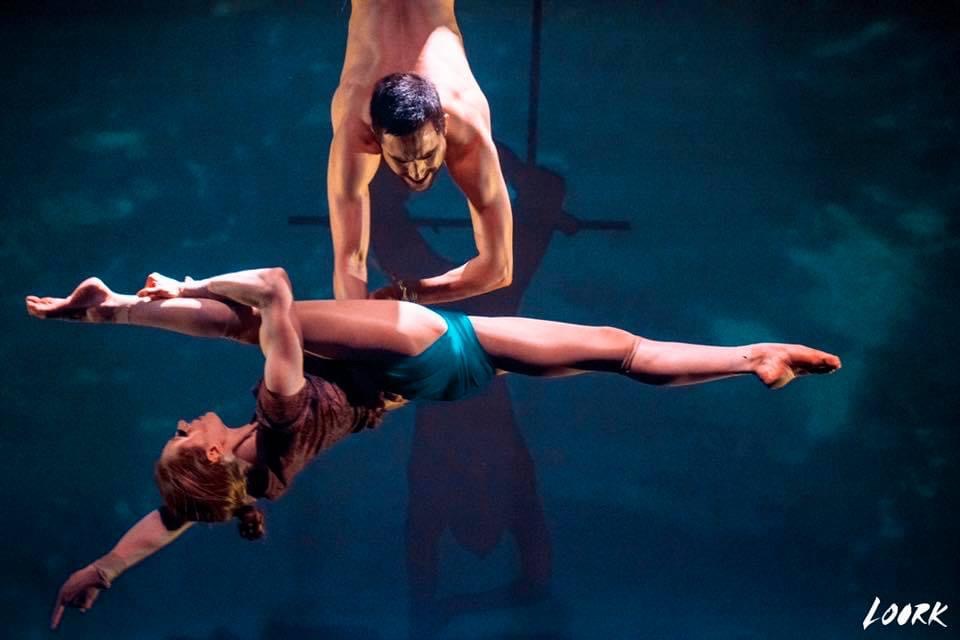
5. Midnight
Dabbling in Cirque du Soleil
Following a short collaboration with the APO for Lakeside Rotorua Concert 2015 we were asked to create a full-length work with the orchestra in 2017. This required a different approach to our usual. A larger cast to fill the space, a family-friendly work to meet their audience, and a very structured rehearsal period to work around how much tech time we were allowed in the venue. We met the challenge by utilising the tried and true circus structure, made famous by Cirque Du Soleil; the protagonist goes on a journey and encounters friends and foes, trials and tribulations. We devised an easy-to-follow narrative by using the circus acts as something our main character, the queen, interacted with on her journey to find a remedy to save her sick king. Magical characters and environments, villains and temptations - all the good fantasy tropes - allowed us to keep the show interesting and varied. As for many of our works, especially those with time or financial constraints, Mike and I talked through a storyline until it felt vital, strong, emotionally poignant, and correct for the show's environment. We then looked at who was around and what their strongest skill sets were, puzzled out how those might fit into the storyline, structured the circus wow factor alongside the drama and allocated acts.
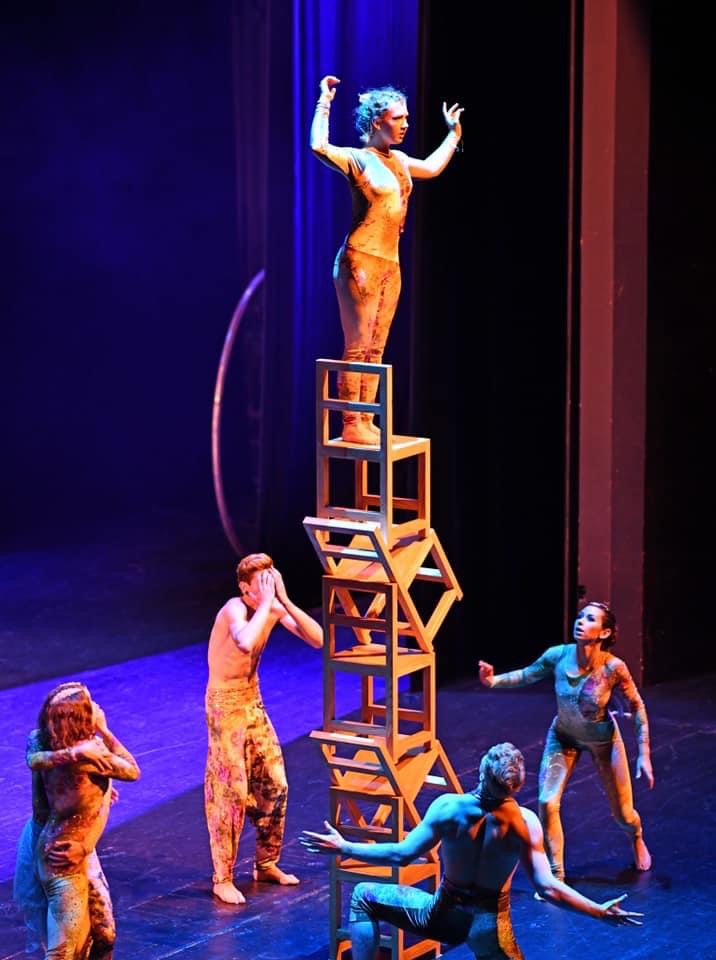
6. The WonderWombs
Vulnerable, performer-led devising
The inspiration for this work was to challenge the overbearing expectation to explore heteronormative dynamics within circus arts by centring female stories and storytelling. It was vital that this work was cast-led and all content was based on the experiences of the cast as circus and performance artists. Across 2018 and then again for re-development in 2019/20, we talked a lot, a lot a lot, about our pasts, what our bodies mean to us, what role circus has in our lives, the perceptions of others, and how we navigate the world as female artists. From our conversations came ideas to explore and we threw in devising exercises and explorations which naturally brought up more on-brand ideas. The show slowly emerged from a wealth of vignettes, ideas, acts, dances, and words, each delving into some personally charged and vulnerable insight. Because the content was so personal, vulnerable, and at times raw, this work was the first that we've prioritised a held space for everyone which looked like daily check-ins, discussions and a consistently boundary-focused approach.
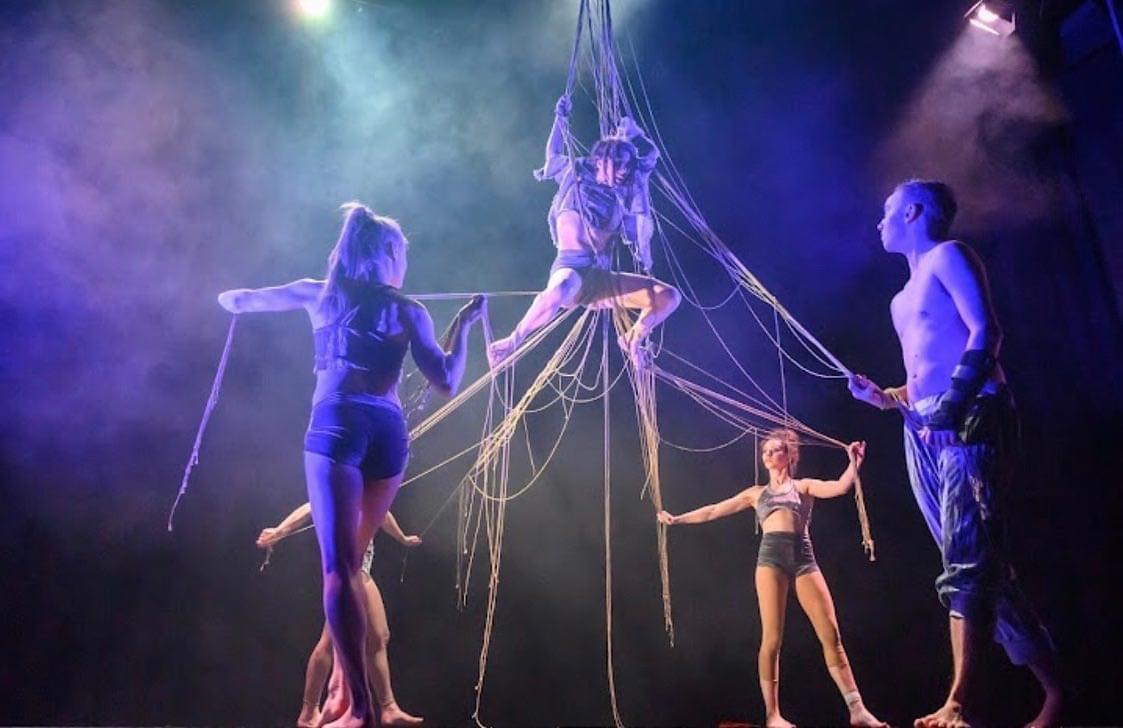
7. HAUS of YOLO
Get a concept and ride the motherf**ker
We were re-developing PULP for SPLORE festival in 2020 when suddenly we lost a key performer to a film job a week out from the show. Unable to let either the festival or the performers down, we realised we needed to make a cabaret-style work. I've never been a fan of cabaret as a genre, everything is too unjustified and often too gratuitous for my liking as a creator so I took this as a challenge to find a new approach. Or, at the very least, a strong or interesting concept to springboard from. One of the ideas that came up during the creation process for The WonderWombs but didn’t make it into the eventual work was to mirror the often-times actual reality of my life and have me sewing throughout the work onstage/sidestage to show the ludicrous nature of being a slave to the stage. As soon as I remembered this idea and extrapolated it into a cabaret where the performers being the show unclothed it all fell into place. Naturally, the acts started to explore fashion and exploitation and the emcee, being a designer, played by all cast members, seemed to add to the show's natural chaotic glory. Get a good concept and ride the idea until you can no longer hold on.
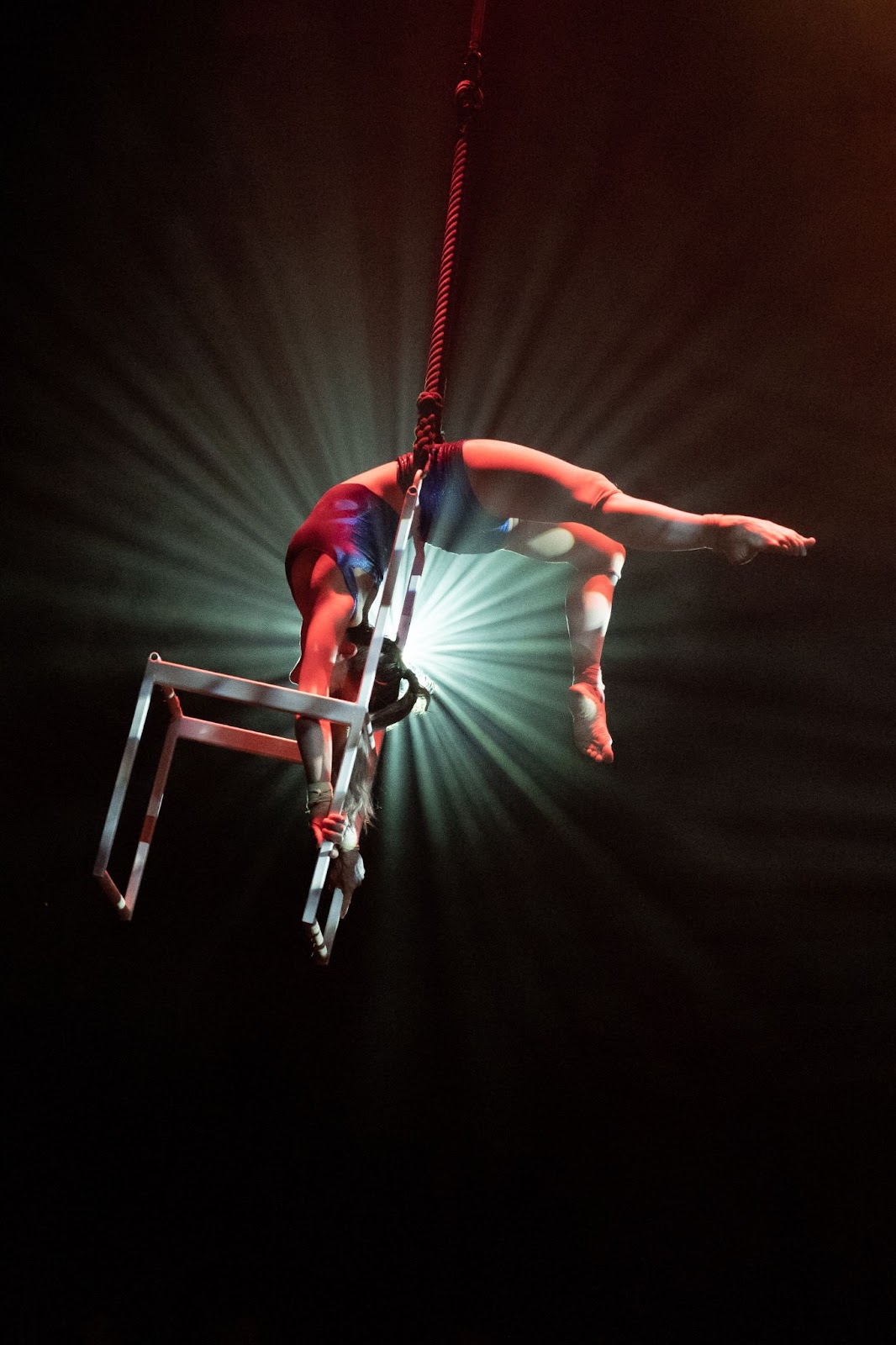
8. The Ice Cream is Melting!
Ticking clock, making philosophical research accessible to children
This work developed largely in the brain of Geoff Gilson, using his intense interest and information gathering around environmental protection. As we began the work in 2021 on commission by Auckland Live, we talked about the beautiful perspective shift that the first COVID-19 lockdown gave us, the attention to detail of one's local ecology. Our process was a bit different for this work, knowing we were creating a scripted circus work for young children. Our first story session included experienced theatrical experience maker Stephen Bain and this challenged us to discuss the circus art form and its potential to engage young audience members in the deep environmental concepts Geoff wanted to include. Stephen's perspective was vital in how to combine these elements and deliver a magical theatrical experience. Our second session involved Theo Gordon, who is a filmmaker and has done a lot of learning about story structure and script writing. He challenged the story and script in all of the good ways, allowing us to create an engaging work for young people that still held the deep environmental kaupapa brought by Geoff and Stephen’s magic.
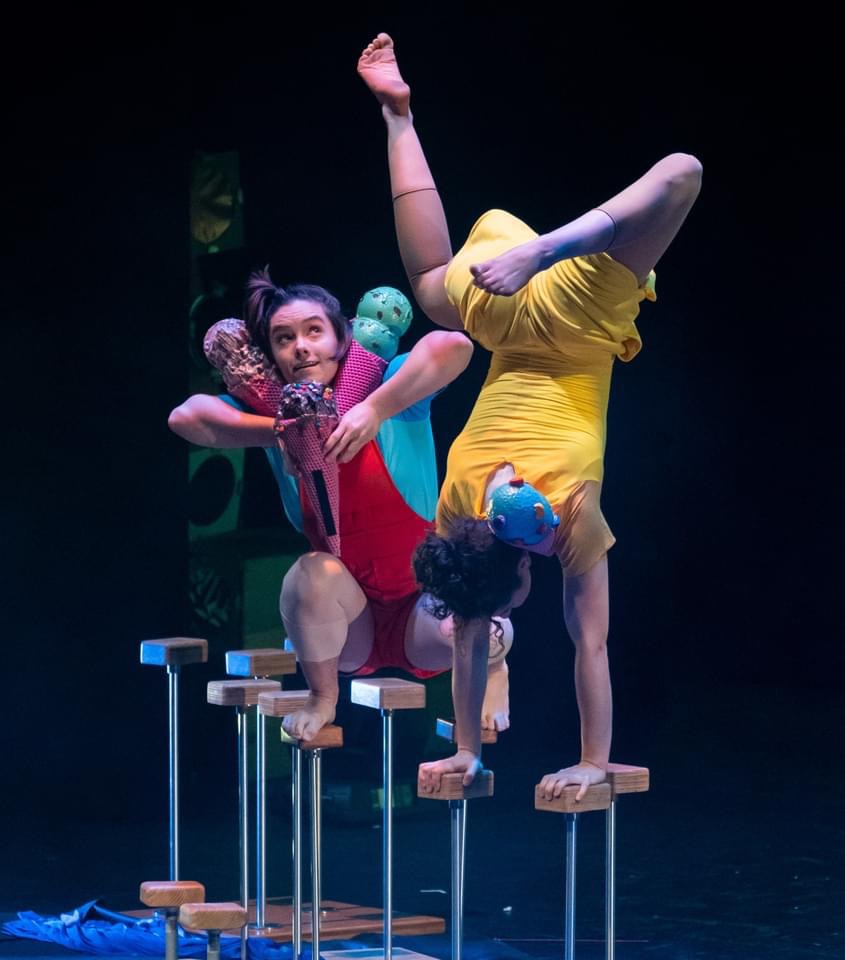
9. Te Tangi ā te Tūī
Working with time, working with te ao Māori
Because we knew circus and nga toi Māori don't yet have established practices, methodologies or shared theatrical languages, we knew it would be vital to ensure a slow process of development (starting in early 2020 for an October 2023 premiere), allowing these things to naturally develop. Firstly, we had korero about circus and nga toi Māori and how they might intersect and uplift each other. We talked about the mauri of circus apparatus, how te ao Māori might navigate the natural individualism of skills seen in circus arts, and how nga atua might be represented within Māori circus theatre. Then, without even considering the ao of our play, we started juxtaposing aspects of circus arts and nga toi Māori to see what mauri we could reveal. From these learnings we looked at the subject matter and continued to create art forms first, now connected to the philosophical undercurrent of the work. This proffered a wealth of ideas and images, improvisations and concepts many of which were further developed into the work itself. We had more korero around the emerging story and then as the script required completion, Amber, our writer, took the videos of all workshops and with fresh eyes drew out their essence and wrote that into the play.
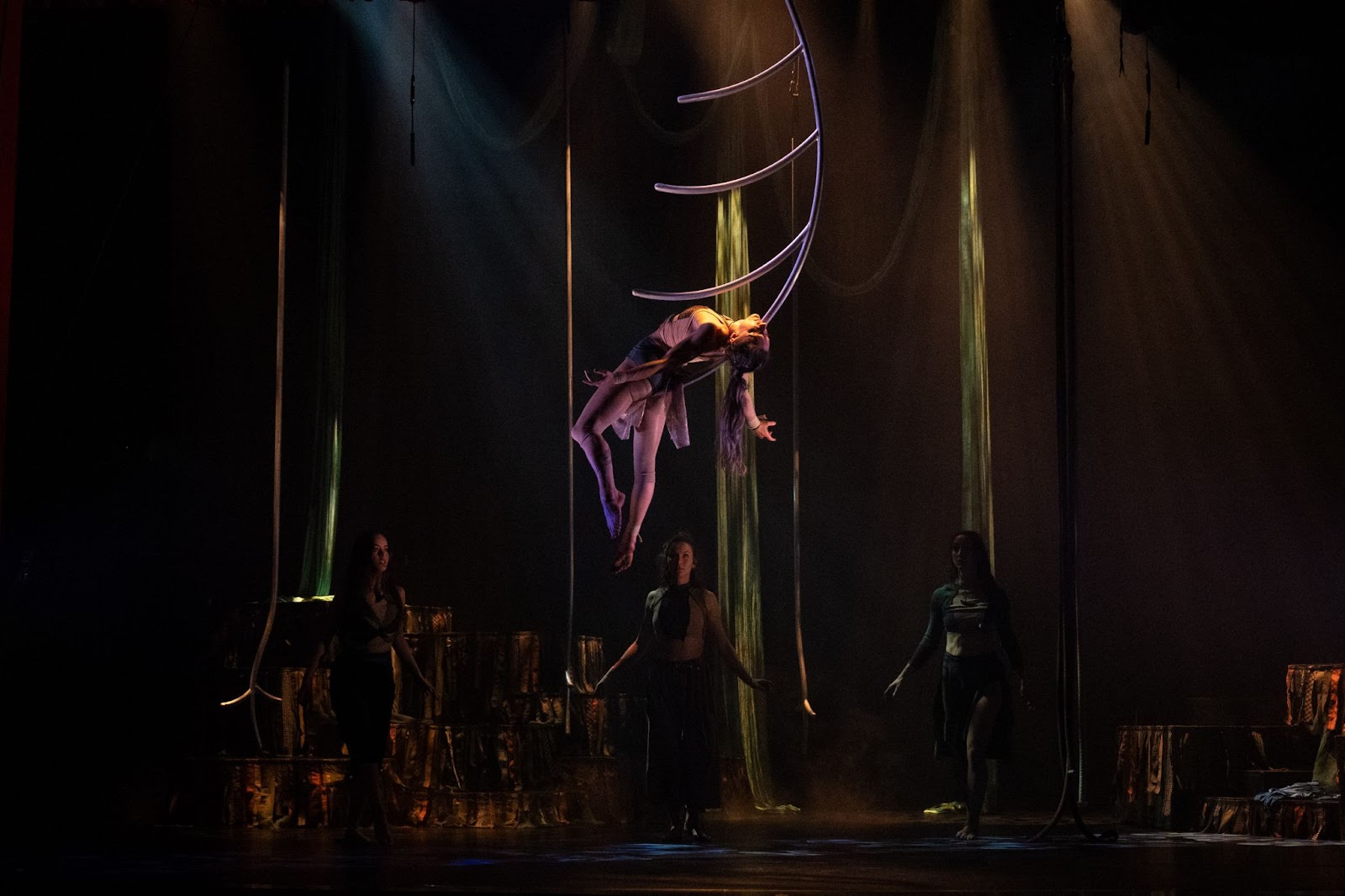
Eve M D Gordon, director at The Dust Palace